What is SEO PowerSuite?
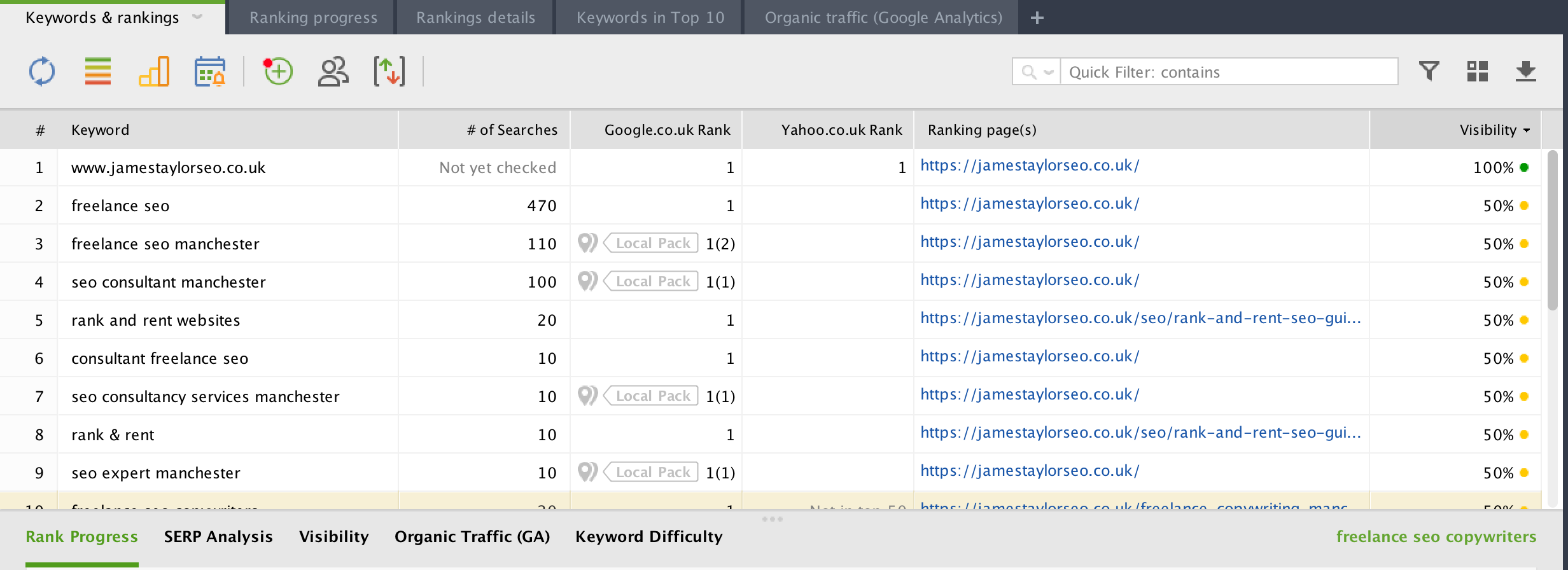
SEO PowerSuite is a long-standing collection of individual tools, and arguably one of the best original suite of tools that the majority of SEO professionals either regularly use or have at least used at one point in their careers.
So, what actually is this tool? SEO PowerSuite is an all-round SEO tool with backlink, content, technical, keyword and even PPC/paid media features. The tool enables SEO’s to perform keyword research, monitor their performance, and analyse backlinks, content review, and optimisation for both SEO and PPC.
Unlike other SEO tools out there, SEO PowerSuite is a desktop tool, so it isn’t reliant on combining multiple servers to gather data. Also, because it’s a desktop tool, it’s more cost-effective.
SEO PowerSuite has four main features that can help you analyse a website and create an effective short and long-term strategy to achieve KPIs. These include:
- Rank Tracker
- WebSite Auditor
- SEO SpyGlass
- LinkAssistant
There are similar tools out there, including ahrefs and SEMrush, both excellent and popular all-round SEO tools. I’d say ahrefs is more tailored towards content, including backlink analysis and opportunities. It does have a keyword feature built-in, but there are discrepancies with the data used compared to Google’s Keyword Planner. In comparison, SEMrush uses data from Google. While all three SEO tools provide similar features, ahrefs and SEMrush are more expensive.
If you’re starting a career in SEO or you have a wealth of experience, SEO PowerSuite is a fantastic tool to use.
SEO PowerSuite Features
It’s worth noting that there is an option to book a 30-minute demo when you download this tool. As mentioned above, SEO PowerSuite has four features available.
- Rank Tracker
- WebSite Auditor
- SEO SpyGlass
- LinkAssistant
In addition to these, you can schedule tasks, which is perfect for staying on track of your workload or if something needs doing overnight. Also, you can customise and control the data SEO PowerSuite provides by ensuring the information is tailored to your needs. This includes choosing the search engine and location and how you want the data presented.
A report feature is available that allows you to create customised and branded reports, which are shareable by sending a link or using the automation mailer.
Rank Tracker
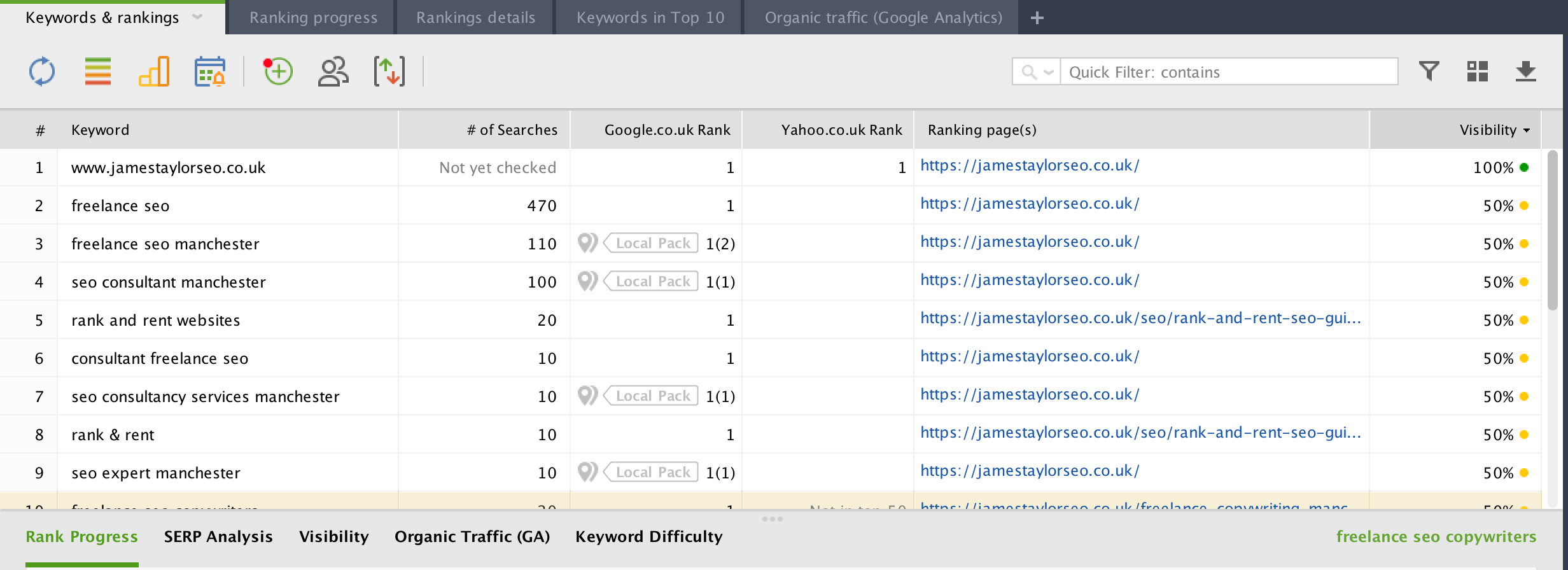
Rank Tracker is exactly what you think it is. It tracks target keyword positions, SERPs, location rankings and more. It’s handy having a complete keyword tool, as not only does it save you time and money using multiple tools, but it means you can manage everything together and easily dip in and out when needed.
You can monitor and search for local keywords, as well as globally. Analyse the latest SERPs to make comparisons on improving page optimisation, review thousands of keyword opportunities while staying up to date with competitors. Rank Tracker also provides you with an online visibility score, to know what the competitive space looks like and where the improvements are. This is essential. Keyword research isn’t just about identifying terms to target and monitor them; it’s about understanding what your competitors are doing, which keywords their ranking well for and which they aren’t for quick-win opportunities, as well as how they’ve optimised their pages.
Rank Tracker allows you to monitor competitors rankings, identify opportunities, SERP features, and more for competitive analysis.
I mentioned localised ranking positions. Currently, Rank Tracker is the only tool that enables users to monitor keyword positions for specific locations, for example, postcode, city or country. This is beneficial if you have a client that operates in multiple locations. It also helps you make comparisons on where the demand is, so that you can put emphasis on those areas. This feature will also help with GMB listings (Google My Business) and find out which businesses are performing better. The data provided may also inform of other target areas that you may not have considered.
I stated that a benefit of using SEO PowerSuite is that you need to use several SEO tools. Rank Tracker has various keywords built-in to support keyword data and accuracy, making it more reliable. It includes Google Analytics, Search Console, Google Adwords, Bing and Yahoo search. Having the three main search engines incorporated provides more analysis and insight into the target audience.
Like most keyword tools, the data provided tells you the difficulty level of securing a top-ranking position. Another critical metric to consider when deciding which terms to target. It helps you be realistic of what’s achievable and split out short, medium and long-term goals. You can also cross-reference between desktop and mobile SERPs to further build out your strategy and understand your target audience.
Accuranker is another great tool to track keywords and review the competitive space. It provides information on keyword volume (taken from Google Keyword Planner), current position, changes in rankings and which URL the keyword is ranking for. It’s a tool I’ve used before and one that I recommend. However, when comparing the cost and the list of features each tool provides, you can receive the same data plus more with SEO PowerSuite.
If there’s a set time you need to review keyword performance, or you need to report an additional report/ update to your clients, you can create scheduled tasks, saving you the job of manually doing it.
WebSite Auditor
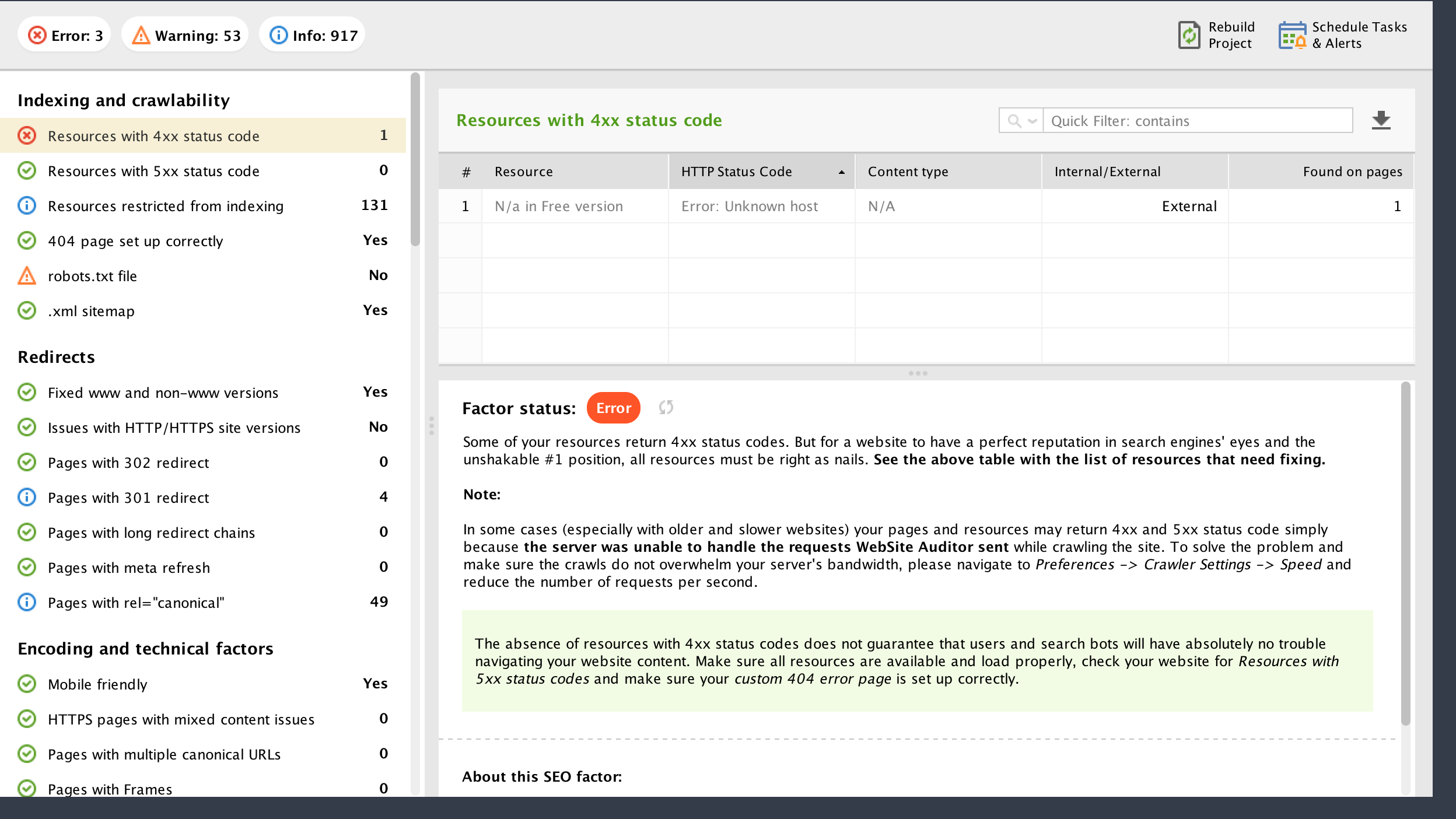
Plenty of tasks for me to be getting on with…
Auditing websites is vital for performance. There are some things that require an AI to crawl a website to identify issues that the human eye may not detect. With WebSite Auditor, it runs performance reports, audits websites, offers support with technical SEO guides, helping to create an effective strategy and prioritising tasks.
What makes this feature valuable is that it scans your website in the same way search engines do, following robots.txt instructions, covering external and internal issues, such as CSS, JavaScripts, images and videos.
When auditing a website, the feature looks at broken links, images, duplicate and thin content, mobile, site speed, redirects, internal linking and more. Any issues identified will alert you of which pages are affected and how to resolve the problems, which is great when updating clients and putting together an effective SEO strategy. It also means you can jump on something immediately to resolve the issue before it becomes more harmful quickly. With SEO, you always need to be one step ahead; otherwise, you’ll see competitors moving into your space.
In addition, it further reviews website pages, including competitors’, to identify recommendations for improvements. Suppose you wanted to delve further into competitor performance. The WebSite Auditor performs a reverse-engineer to analyse strategies and determine why they perform better. This offers a substantial amount of information on competitors that are often missed, helping you understand why their performing well on the search engines and where the quick-win opportunities are.
We all know the value content plays in SEO. With WebSite Auditor, it helps you optimise pages and make them more user-friendly. It tells what needs improving, what’s missing and how you can take advantage of the recommendations to outrank competitors.
WebSite Auditor can quickly and easily generate an XML sitemap or robots.txt file. If the website already has a sitemap/ robots file, it will analyse it and update it when necessary. I’ve come across many websites with missing robot files or sitemaps, so having a tool that can run a quick check is more beneficial than you think.
The more relevant search engines perceive your website to be, the better. But what if you’ve done all you can to make it relevant and the website is still underperforming? Well, this feature has a TF-IDF built-in to provide insight for improvements and optimising for semantic search performance.
Of course, there other tools out there that specialise in technical SEO audits and website crawls, like Deepcrawl. If you wanted a tool for auditing and crawling only, then Deepcrawl or Screaming Frog are recommended, as they provide more data. The WebSite Auditor does provide all the data needed to improve website performance, plus the other features mentioned in this article. While Deepcrawl is favoured amongst SEO professionals, the subscription cost isn’t. Deepcrawl can also over-complicate the information whereas the WebSite auditor specifically keeps things top-level, whilst still providing the information you need.
I’m also a giant fan of the Ahrefs auditing tool, so if you’re looking at tools for SEO audits I’d recommend a combination of the following:
- SEO PowerSuite Auditor
- Deepcrawl (if you want to pay a premium)
- Little Warden (for tracking and keeping an eye on technical aspects)
- Ahrefs Site Auditor
- SEMrush auditing tool (also has a great log file auditor)
- Screaming Frog & Screaming Frog Log File Analyser
SEO SpyGlass
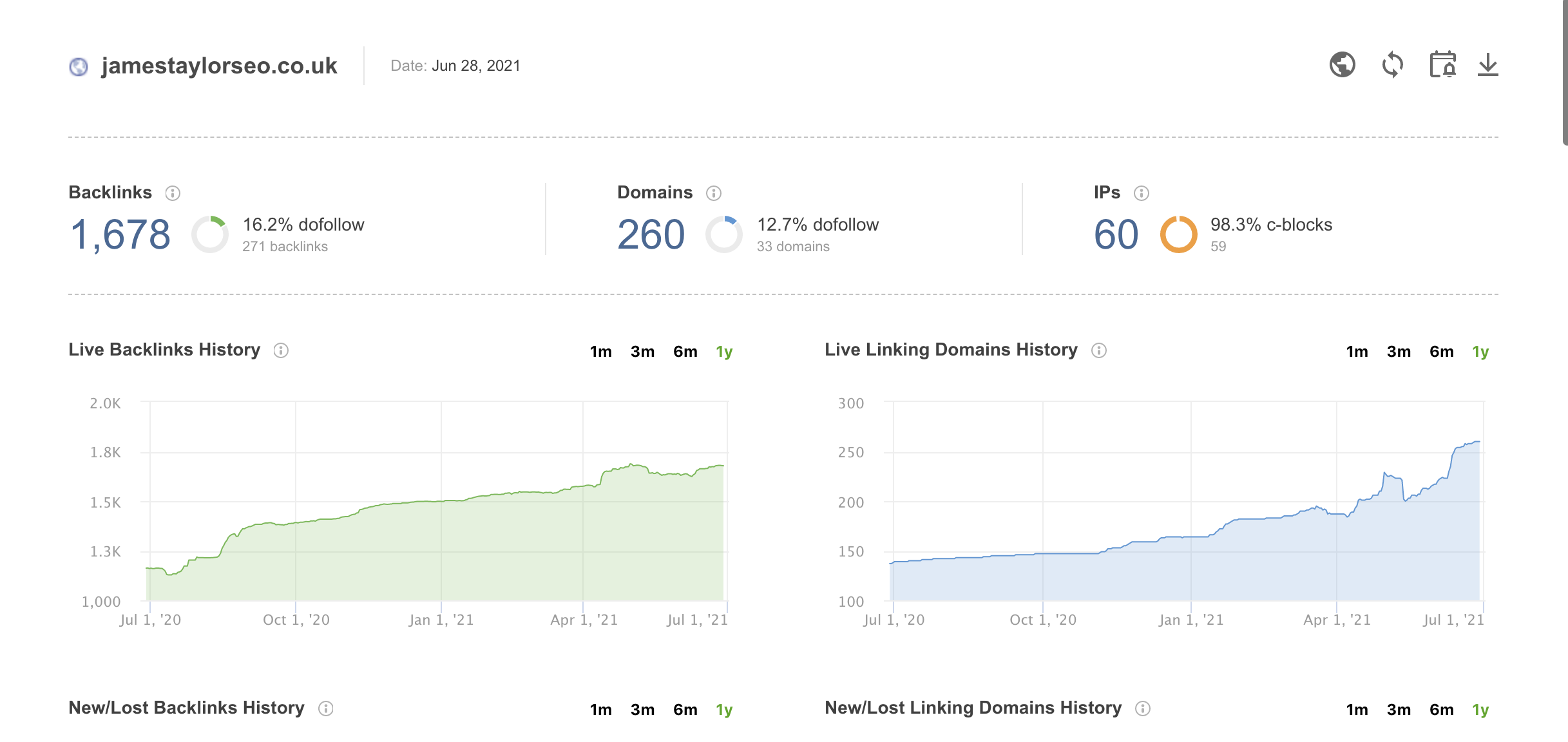
Backlinks. Backlinks. Backlinks. How to find them and what to do with them… The WebSite Auditor performs a reverse-engineer to analyse strategies and determine why they perform better. This offers a substantial amount of information on competitors that are often missed, helping you understand why their performing well on the search engines and where the quick-win opportunities are.
While it’s a time-consuming task to do, it can affect website performance. Fortunately, SEO PowerSuite’s new feature, SEO SpyGlass, does it all for you, saving you time and providing an insightful report for clients and directors. This feature stands out from other tools because it categories the backlinks and referral links, so you can easily manage them and determine which areas need improvement.
Another thing I like about this feature is the ability to monitor page performance so you know which pages are driving in more referral traffic and which ones are having a detrimental impact on your site. The latter is crucial to any website. Harmful links can result in your website getting penalised, which you don’t want, as it can impact rankings. By identifying the toxic links, you can disavow them immediately. While Google Search Console enables you to disavow unwanted links, SEO PowerSuite’s SpyGlass does this for you.
Another benefit to this feature is that you can have all your backlinks across multiple sources in one database, making managing them more accessible. SEO SpyGlass pulls backlinks from Google Analytics, Search Console and other sources, allowing to you easily import them through a CSV file.
You can also review historical backlink data and analyse changes, measure content marketing campaigns to see which campaign was the most successful, helping you plan for future ones. For further competitor analysis, you can evaluate their backlink profile to identify additional opportunities and where the gaps are.
If you’re looking for an SEO tool that offers similar data and information, SEMrush is up there. It’s great for competitive insight and understanding the market space, which websites dominate in traffic and keywords, where the overlaps for quick-wins are and measuring your website against competitors. You also have the option to include specific competitors for more insight, but SEMrush also provides you with who they think are the most relevant competing websites, and often or not, its ones you may not have considered. Unfortunately, SEMrush is expensive, but you can still obtain this information using SEO PowerSuite.
The word ‘spy’ in this feature is exactly that. You can spy on competitors without them knowing, determine what’s working well for them and what isn’t that you can capitalise on. You can review their backlink profile, as mentioned earlier, as well as no-follow and followable links and anchor texts. Also, this feature will quickly analyse all competitors and highlight the most popular backlinks shared amongst them all.
LinkAssistant
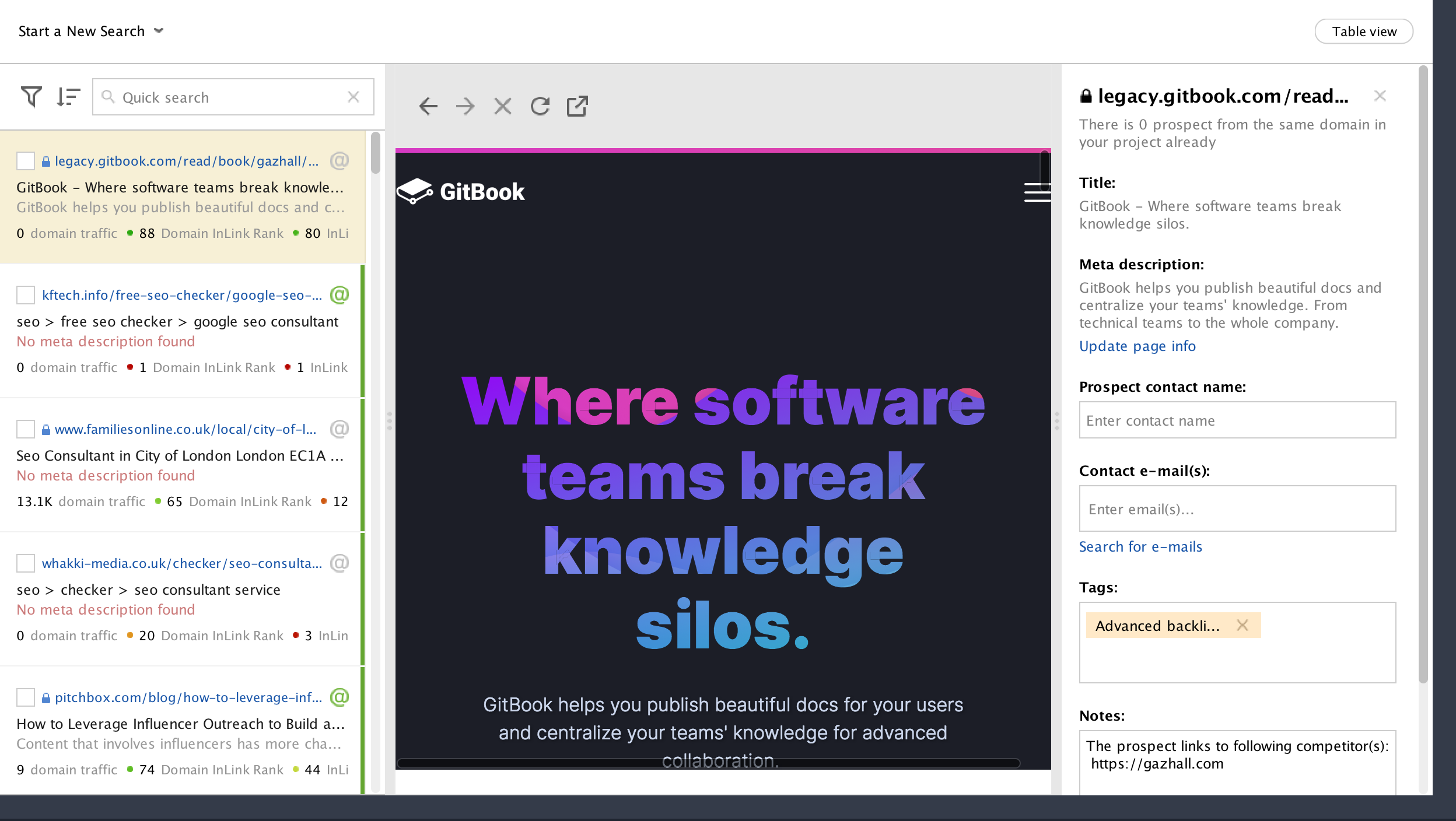
Running a backlink checker on your website and competitors is one thing, but knowing what to do with them is another. With LinkAssistant, it tells you where the opportunities are and their relevance to pair up with your strategy. All you need to do is pinpoint the most favourable type of backlinks, i.e. news articles, guest blogging, reviews or competitions, and the tool will provide you with the most relevant opportunities – saving you a big task.
So, back to competitors’ backlink profile. We all know how critical it is to stay up to date with competitors performance and actions, but having a list of their backlinks puts you on a huge pedestal, opening many doors of opportunities. To do this, you simply paste the URL into the search box, and you’ll receive a database of link and content opportunities – a key thing to remember. When researching competitors’ backlinks, you’re also pinpointing missed content opportunities and what media outlets are interested in, which can help inform your upcoming strategy.
I mentioned earlier about determining the good from the bad when it comes to backlinks. With LinkAssistant, it shares the link’s quality, helping you disregard unwanted ones and prioritising outreach. Each link comes with set data, including domain rating, domain age, social media statistics and more. Tools like ahrefs and Search Metrics also provide this data, but SEO PowerSuite goes into slightly more detail.
While I’m a huge fan of ahrefs and recommend everyone uses this tool, the content opportunities it provides aren’t always the best. I wouldn’t always recommend the keyword rankings and data as there are discrepancies with Google, but for backlinks, it’s fantastic. It can be slow with updating backlinks, but it tells you the date the link was last picked up, the URL it’s linking to, if it’s a follow, no follow or broken link, and other data such as domain rating.
Now, if you’ve outreached before, you’ll know how time-consuming it is, whether it’s ringing journalists or sending emails, including follow-ups. Sometimes, there isn’t enough time to do this. However, by using LinkAssistant, you can outreach to all media outlets, use the email template if you want while creating bespoke messaging, or set-up your own template to reuse. You can monitor and manage sent emails and replies, and set up alerts for follow-ups.
I touched on reviewing historical backlinks, which includes identifying broken, removed or wrongly anchored links. It can be a time-consuming task to check these, but in LinkAssistant, it’ll send you an alert, so that you can act accordingly without any delays. It’s a good way to update clients too.
LinkAssistant crawls over 7 billions pages daily, so you can be sure to identify linking opportunities and stay ahead of the game.
SEO PowerSuite – Top 4 Benefits & Reasons to Sign Up
Here are my top reasons for using SEO PowerSuite and how it can enhance website performance.
1. Keyword Research, Analysis and Rankings
The keyword research analysis is a big task, especially if you have to use multiple tools, from gathering data to comparing with competitors and monitoring rankings. With this being a big bulk of what we do in SEO, it’s simpler if everything is housed under one roof, so you can easily make edits using the recommendations and information provided.
Combining keyword difficulty with approximate search volume, competitors, SERPs, and current ranking positions (local, global, desktop and mobile) mean you can create more efficient strategies and reporting while determining goals and how to outrank competitors.
Did I mention that you check out rankings for YouTube? Remember, it’s the second biggest search engine (after Google), and if you produce video content, optimising them will be rewarding.
Sorting out your keywords across all stages is as simple as the information provided.
2. Speedy Audits
Submit the URL, let it run and wait for the results. How long do you need to wait? Not long. WebSite Auditor will provide a list of errors and prioritise them, similar to a RAG status, but labelled differently:
- Errors: issues that need sorting asap. (Red)
- Warnings: potential problems that, if left, could be harmful. (Amber)
- Info: things to look at later. (Green)
WebSite Auditor provides an explanation and recommendations on correcting it, making it easier for you.
Alongside website audits, you can review optimisation and technical audits – yes, more audits. Is there a thing as too many audits for a website? Is there a perfect website?
It’s quite easy to review content and on-page optimisation using this tool. Select the URL and the main target keyword and run the audit. The tool will rank the issues found, so that you can prioritise and rectify them, likewise with the technical SEO audit. Select the URL you want to examine, run the audit and prioritise the fixes.
Aside from traditional auditing, you can also check to see how mobile-friendly your website is, something I recommend doing as mobile plays a huge role in search marketing.
That’s not all this feature does. It runs an internal link audit and tells you how to restructure your website to enhance performance.
I mentioned earlier that it crawls your website the way same search engines do, which is a winner and highly beneficial, to identify crawling and indexing issues.
Combine all of the above, plus reviewing sitemaps and robot files, it puts auditing a website to a new level.
3. Backlinks and Outreach
The level of information provided by LinkAssistant and SEO SpyGlass is substantial and can take your website to the next level while waving off competitors. Once you’ve submitted the URL, so you can review link prospects (under link prospects) and choose the most appropriate option to best match your campaign. These include:
- Guest blogging
- Topical blogs
- Current backlinks
- Competitor backlinks
Once you’ve chosen the prospect, add in some keywords and review the results.
What’s the next stage after combining a list of backlink opportunities? Outreaching. Imagine manually finding contact information or buying a costly journalist database tool? You’d have to make sure the time spent gather information vs the cost of the tool vs time spent outreaching is worth it. Just as well, LinkAssistant has this feature built-in and let us send those emails at a click of a button.
You can also monitor and manage the links, including historical ones, while keeping an eye on competitors. All the built-in features of this tool offer customised reports, and the backlink checker is no different. I know clients have other preferences when it comes to reporting, which is why SEO PowerSuite is a great tool to use, as it does this for you based on the metrics you want. So, you don’t need to worry about wasting time presenting data that your clients aren’t interested in.
4. Competitors Analysis
Fancy spying on competitors without having several tools open? All four features from SEO PowerSuite provides insightful competitor information. I recommend using this feature, as it does offer additional data that can help build out strategies. All you need to do is submit a competitor’s URL, sit back and relax.
As far as competitor analysis goes, this tool is up there as one of the best. You can get information on their target keywords, ranking positions, backlinks (including broken links), SERPs, content and more. You can create reports and regularly compare.
Conclusion
When looking at the price and the amount of features you get, I think it’s fair to say that you get your moneys worth with SEO PowerSuite. It’s a little annoying that you have to download it, so it’s not like you can just log in like most other tools on-the-fly.
Having said that, you’re downloading it for good reason… there’s tons of data at your fingertips for a low price. Speaking of price, a monthly subscription will set you back $249 per year for the professional version, and $599 per year for the enterprise version.
You can also get a 7 day free trial and then still get free access to the tool once the initial trial is over, so it’s not the end even if you don’t want to pay for it.
Get it downloaded and have a gander for yourself. It’s worth digging around to find your favourite feature, and what will no doubt be another mainstay tool in your collection as an SEO pro.


